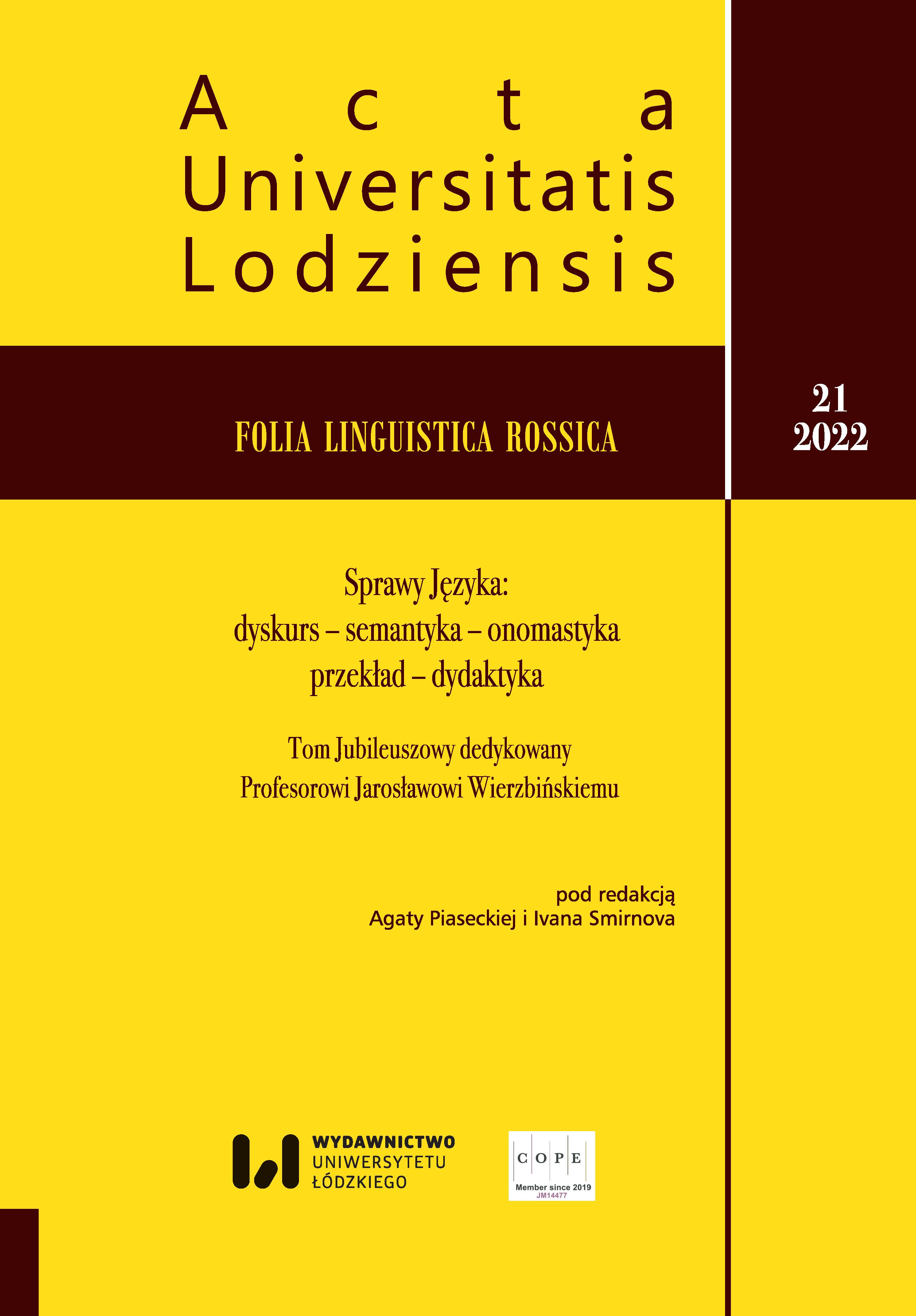Глагольные причастия в "Учительном Евангелии" Мелетия Смотрицкого
Participles in the "Didactic Gospel" of Meletij Smotryc’kyj
Author(s): Thomas DaiberSubject(s): History, Anthropology, Translation Studies
Published by: Wydawnictwo Uniwersytetu Łódzkiego
Keywords: Meletij Smotryc’kyj; Didactic Gospel; Ostrog Bible; Kuliš; Synodal translation; translation technique
Summary/Abstract: In the course of his missionary activities, in his Didactic Gospel (Evanhelije Učytel’noe = UE), Meletij Smotryc’kyj aimed to present Biblical texts and their commentaries in a more vernacular, not so much Church Slavonic language in order that readers could more easily become familiar with the views of Orthodox authors. Based on the material of the first ten Biblical readings in the order of UE, the article identifies all participle constructions in the Greek source text and compares them with their translation equivalents in different Bible translations: UE, Ostrog Bible, Ukrainian Bible translation of Kulyš, and Russian Synodal translation. The article poses the question of whether it is possible to make conclusions about the closeness of each translation towards a more vernacular way of speaking by showing a numerical comparison of all instances, when the translations are in full morphological equivalence with the Greek source. Considering not only morphological equivalence with the Greek construction but adding grammatical tense of the participle as a second parameter for comparison, then the translations will differ more significantly. Change of tense, of course, is inevitable if the target language does not exhibit an equivalent for aorist, but still, it is a question if the translation of an aorist participle results in a preterit participle (mostly aspectually perfective) or in a present participle (aspectually imperfective). The article is not concerned with linguistic problems of verbal aspect in different Slavic languages but seeks to find out which conclusions about the translation technique could be drawn from comparing numerical correspondences in the realm of morphological equivalence. The material shows that the numerical comparison of instances of morphological adequacy in different Slavic translations permits conclusions about the literal character of the translation but does not allow the stylistic characteristics to be judged.
Journal: Acta Universitatis Lodziensis. Folia Linguistica Rossica
- Issue Year: 2022
- Issue No: 21
- Page Range: 27-36
- Page Count: 10
- Language: Russian

